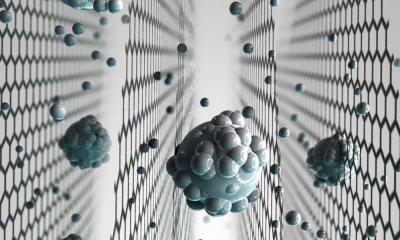Scientists at The University of Manchester have made a breakthrough in the field of graphene oxide membranes for water desalination. Previous research at The University of Manchester found that when immersed in water, graphene oxide membranes become slightly swollen and smaller salts flow through the membrane along with water, but larger ions or molecules are blocked. Now, the team has devised a strategy to avoid the swelling of the membrane when exposed to water. The pore size in the membrane can be precisely controlled which can sieve common salts out of salty water and make it safe to drink.

When the common salts are dissolved in water, they form a 'shell' of water molecules around the salt molecules. This allows the tiny capillaries of the graphene oxide membranes to block the salt from flowing along with the water. Water molecules are able to pass through the membrane barrier and flow anomalously fast which is ideal for application of these membranes for desalination.
The team at The University of Manchester said: "Realization of scalable membranes with uniform pore size down to atomic scale is a significant step forward and will open new possibilities for improving the efficiency of desalination technology. "This is the first clear-cut experiment in this regime. We also demonstrate that there are realistic possibilities to scale up the described approach and mass produce graphene-based membranes with required sieve sizes".

